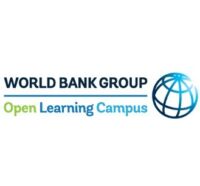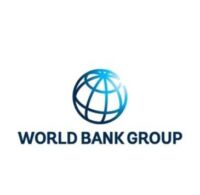Results Based Financing (RBF) for Health is an interactive course that includes narrated presentations, discussion forums, group work and a quiz for each module to assess your knowledge.
The course is based on materials developed over the course of several years for the delivery of face-to-face RBF learning events, which generated a rich repository of knowledge. That knowledge has been translated into e-learning modules to reach a critical mass of health practitioners globally. The course aims to equip participants with specific knowledge to help determine whether RBF is an appropriate tool for their context and if so, what type of RBF approach may be appropriate to adopt.
The e-learning course is supported by funding from the Health Results Innovation Trust Fund (HRITF). Since 2007, HRITF has been pioneering RBF programs, with a particular focus on improving maternal and child health outcomes to accelerate progress towards Millennium Development Goals (MDGs) 1c, 4 and 5. Learn more: www.rbfhealth.org or www.facebook.com/RBFhealth and www.twitter.com/RBFhealth.
Please take a moment to listen to the course introduction by Petra Vergeer, who is one of the main coordinators of this e-learning course and who helped develop and taught the material in this course in its face-to-face version.
Course context
Traditionally, government and donor funds to improve health service delivery have concentrated on increasing critical inputs, such as infrastructure, equipment, supplies, drugs and vaccines. Since the adoption of the Millennium Declaration in 2000, this development assistance for health has more than doubled. And yet the increase in investments has not translated into the expected health outcomes in low and middle income countries. The challenge these countries face is unequal access and utilization of essential health services, often due to low quality of services, inefficient delivery of services and limited management capacity. In addition, poor households in many countries face impoverishment due to limited financial protection in the health system. Consequently, many countries, especially those in Africa, risk not achieving the MDGs for maternal and child health by 2015.
As a result, many governments and development agencies have been motivated to try new innovations and approaches that can boost health system functioning. RBF is one approach that is gaining momentum with country governments and development partners. RBF links financing to pre-determined results such as the actual use of health services, as well as their quality, and as opposed to financing inputs such as medical equipment or supplies. The experience so far shows promising results, especially in terms of increased utilization of key maternal and child health services. In addition, RBF is seen as a way to strengthen core health systems, making them more accountable and efficient by delivering greater value for money.
A vital aspect for any successful RBF approach is ensuring the appropriateness of the strategy for a particular context, which is at the core of this e-learning course. The World Bank Group and its partners has undertaken many capacity building engagements on RBF, including:
- Consultations with key stakeholders.
- Study tours from countries considering or starting RBF to those already implementing them.
- Knowledge and lessons-sharing events.
- Technical training workshops for policy makers and other stakeholders.
- Peer-to-peer exchange forums.
These programs are geared at informed decision-making on the appropriateness of RBF and building implementation capacity to mitigate the risk of failure in implementing RBF mechanisms. This e-learning platform is designed to complement these initiatives, and to: equip participants with the tools to decide whether RBF may be an appropriate policy option to consider in addressing health system challenges; and to be able to apply RBF design and implementation concepts/principles.
The objectives of the course are to:
- Provide background knowledge on RBF and its different approaches.
- Introduce core principles of RBF for health.
- Provide some country examples of RBF for health in practice.
Target Audience
This course is designed for those interested in learning more about RBF, including:
- Health and Financial Practitioners/Professionals at the national and district levels.
- Non-Governmental Organizations (NGOs).
- Development Partners.
- Academicians.
- Policymakers.
Learning Objectives
By the end of the course participants will be able to:
- List the main approaches to RBF and their potential impact on improving and strengthening the utilization of health services.
- Explain the design and implementation features of RBF as a programmatic intervention, to improve the capacity of health systems and to achieve specified outputs and outcomes.
- Make informed decisions about the appropriateness of RBF in general and the suitability of different RBF approaches in a particular context, using lessons learned from case study examples.









